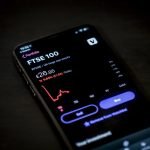Introduction.
Trading in the forex market can feel like a rollercoaster at times. The ups and downs, the sudden shifts, and the feeling of excitement (and sometimes panic) can leave you wondering if you’re making the right moves.
But there’s one key concept that can really help you stay grounded and make smarter decisions: the risk-reward ratio.
If you’re new to forex trading or you’re just trying to fine-tune your strategy, understanding how to calculate the risk-reward ratio can make all the difference in the world.
It’s not just some fancy math—it’s a simple tool that can give you a clearer picture of how much you’re willing to lose versus how much you’re aiming to gain.
Getting this right can help you avoid risky bets, control your losses, and put you on the path to consistent profits. So, let’s dive in and break it down in a way that’s easy to understand.
What Is the Risk-Reward Ratio?
The risk-reward ratio is a measure that compares the potential loss of a trade (the risk) to the potential profit (the reward).
In simple terms, it tells you how much you’re willing to risk in order to make a certain amount of profit. For example, if you’re risking $100 to make $300, your risk-reward ratio is 1:3.
It’s one of the most useful concepts for traders because it helps to manage your risk while setting realistic expectations.
If you’re using a good risk-reward ratio, it helps ensure that your winning trades outweigh your losing ones, even if you lose more trades than you win.
Why Is the Risk-Reward Ratio So Important in Forex Trading?
In forex, the market can be unpredictable, and emotions can cloud judgment. Without a proper risk-reward ratio, it’s easy to fall into bad habits, like risking too much on a single trade or getting greedy with potential profits.
Let’s say you have a 1:1 risk-reward ratio. If you win 50% of the time, you break even. But if you risk more to win more (like a 1:2 or 1:3 ratio), even a lower win rate could still lead to profitability.
This is where the risk-reward ratio really shines—it helps to put things into perspective and forces you to think strategically.
How Do I Calculate the Risk-Reward Ratio?
Let’s keep things simple. Calculating the risk-reward ratio in forex is straightforward and can be done in just a few steps.
Step 1: Determine Your Entry and Exit Points
You need to know where you’re entering the trade and where you’re planning to exit if things go right or wrong.
- Entry point: This is the price at which you’re going to buy or sell the currency pair.
- Stop-loss point: This is the price level where you’ll get out of the trade if the market moves against you. This protects you from huge losses.
- Take-profit point: This is where you plan to exit the trade if things go in your favor, locking in profits.
Step 2: Calculate the Risk
The risk is how much you’re willing to lose if the trade goes against you. To calculate this, subtract the stop-loss price from your entry price. Then, multiply that by the position size (how much of the currency pair you’re trading).
For example, if you’re buying EUR/USD at 1.1000 and setting your stop-loss at 1.0950, you’re risking 50 pips.
If your position size is 10,000 units (a standard lot), each pip could be worth $1. So, you’re risking $50 on that trade.
Step 3: Calculate the Reward
The reward is how much you’re aiming to make if the trade goes in your favor. To calculate this, subtract the entry price from your take-profit price, then multiply by your position size.
Let’s say you’re targeting a take-profit of 1.1100 for the same EUR/USD trade. That’s 100 pips of potential profit. If your position size is still 10,000 units, and each pip is worth $1, your potential reward would be $100.
Step 4: Get the Risk-Reward Ratio
Now that you have your risk and reward, the ratio is simply the risk divided by the reward. In this example, you’re risking $50 to potentially make $100. So, the risk-reward ratio would be 1:2.
Formula:
Risk-Reward Ratio = (Risk Amount) ÷ (Reward Amount)
How Do I Use the Risk-Reward Ratio Effectively?
Once you’ve calculated your risk-reward ratio, it’s time to use it to shape your trading strategy.
1. Set Realistic Targets
It’s tempting to go for a high risk-reward ratio (like 1:5 or 1:10) because it promises big rewards. But remember, higher ratios mean you’ll need more precision and luck. A more realistic ratio, like 1:2, might be more consistent and manageable.
2. Adjust Your Position Size
If you want to trade with a higher reward potential, consider adjusting your position size. This way, you can maintain a balance between risk and reward.
3. Keep Your Risk Consistent
It’s always best to risk a small percentage of your account balance on each trade. Many traders recommend risking no more than 1-2% of your account balance per trade. This helps to avoid blowing up your account in case of a losing streak.
4. Use the Risk-Reward Ratio as a Filter
The risk-reward ratio can also act as a filter for your trades. If the potential reward doesn’t justify the risk, you might want to skip that trade and wait for a better setup. Being selective helps you trade smarter, not harder.
How Do I Decide on a Good Risk-Reward Ratio?
Different traders have different preferences when it comes to the ideal risk-reward ratio. A common recommendation is to aim for at least 1:2. That means, for every dollar you risk, you aim to make two. Some traders prefer 1:3 or even higher, especially if they have a high win rate or use longer-term strategies.
The key is to find a balance that works for your trading style and risk tolerance. Some traders prefer lower ratios with higher win rates, while others prefer higher ratios with a higher win rate. It’s all about finding a formula that fits.
The Role of Risk-Reward Ratio in Trading Psychology
Managing risk is just as much about psychology as it is about numbers. Knowing that your risk-reward ratio is favorable can give you more confidence in your trades. Plus, it can help to take the emotional pressure off during a losing streak. If you know your system has a solid risk-reward ratio, you’re more likely to stick with it and avoid panic.
FAQs
Q: What’s the best risk-reward ratio for forex?
A: A common recommendation is 1:2. However, the best ratio depends on your trading strategy, win rate, and risk tolerance. Some traders go for 1:3 or 1:4, but keep in mind that higher ratios may be harder to achieve consistently.
Q: Can I use the risk-reward ratio for short-term trading?
A: Yes, the risk-reward ratio is useful for all types of trading, including scalping and day trading. The key is to adjust it based on your strategy and the time frame you’re trading in.
Q: Is a high risk-reward ratio always better?
A: Not necessarily. While a higher ratio means more reward for the same risk, it also means that you need to be more accurate with your trades. Sometimes, a more moderate ratio, like 1:2, might give you more consistent and manageable results.
Conclusion
Mastering the risk-reward ratio is a game-changer for forex traders. By calculating it properly and using it as part of your strategy, you can increase your chances of long-term success and avoid emotional decisions that could hurt your trading account.
As you grow in your trading journey, remember that it’s all about balancing risk and reward—finding a ratio that works for you and sticking with it.
So, now that you know how to calculate the risk-reward ratio, how will you adjust your trading strategy to make the most of it?





GIPHY App Key not set. Please check settings